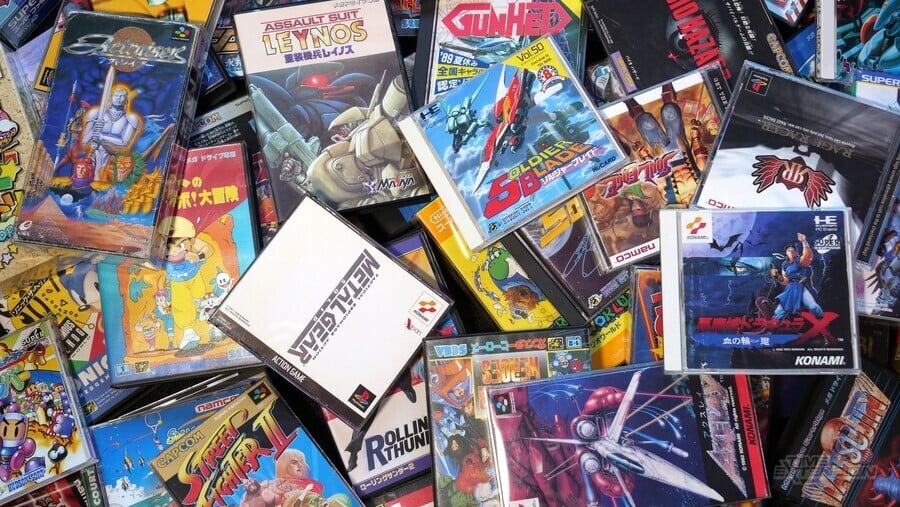
What's the first thing you think of when you hear the term 'grey import'? If it's anything other than video games, then chances are you didn't live through one of the most exciting and unpredictable periods of gaming history – a time before the internet, where monthly print magazines would report on new and exotic software and hardware from the Far East, games with largely unpronounceable Japanese titles that cost a small fortune but often arrived months ahead of their western release – if, indeed, they launched outside of Japan at all. It was a period in which the video game console market was truly starting to blossom following its collapse in the '80s, and Japanese systems were very much at its vanguard. These 'grey imports' – so-called because the product in question was sourced from outside of the manufacturer's authorised trading channels – were a tantalising glimpse of the future for many players.
It's perhaps worth discussing the state of the video game market in the west before going any further. In North America, the Nintendo Entertainment System was finding its way into millions of homes after overcoming the nation's distaste for console gaming after the crash of '83. Home computers – like the C64, Amiga, Atari ST, IBM PC and Apple II – were also playing host to a wide range of excellent software. Meanwhile, over in Europe – where the NES hadn't achieved quite as much success, but the Sega Master System was bubbling under – the market was still dominated by home micros like the Sinclair ZX Spectrum, C64 and Amstrad CPC, while 16-bit computers like the Amiga and ST were only just beginning to take over from their technically weaker rivals.
It was into this mix that Japanese hardware slowly but surely started to make an impact, aided immeasurably by the fact that Japanese companies such as Sega, Capcom, Data East, Irem and Konami were proving to be sizeable draws in the still-robust coin-op sector. There was a huge appetite for these games amongst a western audience; the arcade versions were to be found in locations all over the world, while western firms such as Activision, US Gold, Ocean and Elite were happy to pay license fees to IP holders so they could convert popular coin-ops to home computers – often with less than impressive results, it has to be said. There was definitely a desire to see these titles executed better on superior hardware.

One of the first outlets in the UK to really give console and import gaming any kind of attention of EMAP's Computer & Video Games magazine. The world's oldest dedicated video game publication – it began life in 1981 – CVG predominantly focused on home computers at the close of the '80s but gradually gave more and more space to coin-op and console titles, even going as far as to establish a section of the magazine devoted purely to the latter, christened 'Mean Machines', and led by Tony Takoushi.
The next stage would be to massively dent my credit card and then to wait for a parcel to arrive before writing up the copy. Usually, what I'd produce would be the first review of the item in Europe, which was a buzz
"The 'grey' market didn't really exist when I went searching for games in 1979," recalls Takoushi today. "In terms of later years, it was importers like Shekana in North London that made me sit up and notice their arrival." Takoushi would later carve out a successful career at Sega Europe and Codemasters, but prior to that, many credit him with popularising Japanese games and consoles in the UK via CVG. He did this long before the internet existed and remembers the laborious process he used to go through in order to secure software and hardware for coverage. "First, you'd pick up the phone and dial a very long telephone number, then wait forever until the phone was picked up by someone at Laox, a major store chain in Japan. Then you'd pray they spoke English (they usually didn't) before you would eventually get transferred to someone who spoke English rather badly who would take the order and address for shipping – after repeating my details three or so times, of course. The next stage would be to massively dent my credit card and then wait for a parcel to arrive before writing up the copy. Usually, what I'd produce would be the first review of the item in Europe, which was a buzz."
Takoushi was one of the first westerners to afford any kind of coverage to the NEC PC Engine, the machine that is often credited with spearheading the entire grey import scene in the UK and Europe. Released in 1987, the PC Engine was more powerful than its console rivals, the NES and Sega Master System, and was capable of hosting incredibly faithful arcade ports. Even when compared to ports on 'true' 16-bit systems like the Amiga and ST (the PC Engine is technically an 8-bit platform), the results were, more often than not, notably superior.
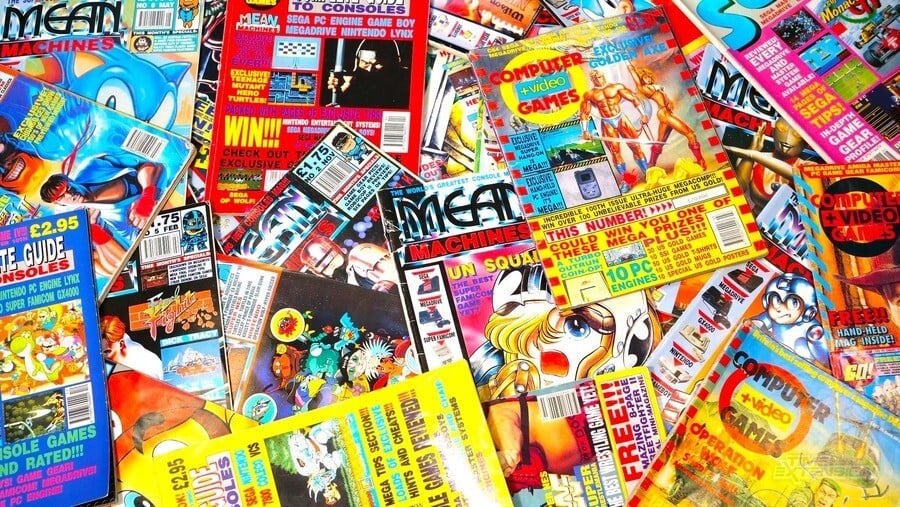
For Takoushi, NEC's system remains a personal favourite to this day. "The PC Engine is the prime example of the buzz I got from sharing a new piece of hardware with a western audience," he explains. "It crushed the Sega Master System; I truly loved – and still do love – my PC Engine. It was such a thrill to tell people about this truly groundbreaking home tech." Takoushi later discovered that his passionate coverage of the console had actually created headaches for NEC's UK arm. "I followed up with a call to NEC around a year after my first review of the PC Engine, and they put me through to the NEC home electronics guy. I gave him my name, and there was a long pause. Then he said, 'You've made my life hell with kids ringing asking for the console and when it's going to be released!' I said 'Great, job done then!' Ironically, they never released it officially in the UK, although it did come to the States as the TurboGrafx-16."
When I joined CVG magazine in 1988, one of the very first things I did was go into the games room and play on the PC Engine that EMAP had imported
If Takoushi laid down the foundations of grey import coverage in UK print media, Julian 'Jaz' Rignall arguably helped it reach its full potential. Rignall had won CVG's 1983 UK Video Arcade Game Championship before becoming a games journalist on Newsfield's Zzap!64 in 1985, a magazine dedicated to the Commodore 64. In 1988, Rignall moved to EMAP, the publisher of CVG, and upon becoming editor, was fast to reposition the magazine's focus on the exciting things emanating from Japan.
"Even before I started working as a games journalist in 1985, I was aware of software that was being produced in other countries such as Japan and the US," Rignall recalls. "Companies like US Gold imported American Atari and C64 software, much of which was excellent, so that certainly raised my estimation of games that were produced outside of the UK. While it wasn't exactly a 'grey import', the first NES I ever played on in 1986 was an American version of the machine that was brought over to Britain by Activision for evaluation. I guess that was when I truly understood the concept of importing a foreign games system, plugging it into an NTSC-compatible television set, and playing its otherwise-unavailable games. A year or so later, Tony Takoushi started reporting about cool Japanese software and systems in CVG, and that further piqued my interest. When I joined CVG magazine in 1988, one of the very first things I did was go into the games room and play on the PC Engine that EMAP had imported. I just couldn't wait to see R-Type in action, and I wasn't disappointed – it was an incredible conversion for its time, and certainly knocked the 8-bit home micro software I'd been playing into a cocked hat. I became increasingly obsessed with these new Japanese systems and their ranges of software, and pulled out all the stops in terms of getting hold of the latest and greatest stuff, which I would then write about with a great deal of gusto and enthusiasm in the pages of CVG."
There's very much the sense that Rignall and the other journalists who began taking Japanese titles seriously were breaking new ground. "Very few – if any – other magazines were covering grey import software in the late '80s," Rignall says. "I just felt that the games being made in Japan at that point were the most exciting, innovative, and downright coolest stuff that you could buy and play. I was obsessed with getting the latest software – firstly so I could just play these games and experience them for myself, but secondly, so I could write about them. I just felt that any gamer worth his or her salt would be interested in this cutting-edge stuff. PC Engine and Mega Drive games were absolutely out of this world compared to most of the stuff that was being produced in Europe for the well-established domestic home micro systems. I felt duty-bound to let gamers know that these systems and their games existed and that they offered the very finest gameplay experiences of the era."
I just felt that the games being made in Japan at that point were the most exciting, innovative, and downright coolest stuff that you could buy and play
Rignall's willingness to devote a large number of pages each month to titles that originated from outside of the UK would become a self-fulling prophecy, to a degree. Because there was now an outlet with a huge audience covering the sector, it resulted in more and more UK computer stores stocking imported software and reduced the need to source games direct from Japan. "Around the same time, small grey import companies began to pop up and started advertising in CVG, and I'd regularly call them up to see what new software they had available," he recalls. "That was pretty much the beginning of the grey import market in the UK – and the scene began to flourish and gain in popularity as we continued to highlight the amazing new import games that were coming out at the time."
The rise of these stores had a reciprocal benefit, as it made it easier for UK magazines to source Japanese and American games. "Initially, the CVG team would call around the various grey importers to find out what new games and systems they had, and we'd offer to give them credit in our review if they sent the stuff to us," Rignall explains. "Most were more than happy to do this, as they were essentially getting an official endorsement from the magazine that gave their business extra credibility. I have no idea how many extra game sales a review credit generated, but it must have been pretty effective because as time went on, we actually had grey importers calling us to tell us when they had just received new stuff fresh off the boat and offering to send it to us."
With its proliferation of small, independent computer stores, the UK saw no shortage of potential outlets for imported software. One such retailer was KC's Computers & Console Magic, based in the UK town of Loughborough. Owner Geoff Carter cites the arrival of the PC Engine as the catalyst for his business focusing on Japanese consoles after initially selling home computer software. "The release of the Sega Mega Drive in 1988 gave the import market even more momentum because Sega was a world-famous name thanks to its coin-op exploits with titles like OutRun, Space Harrier and After Burner," he adds. By the time the Neo Geo arrived in 1990 – a system that offered a totally authentic arcade experience in the home, at an eye-watering cost – it was clear that console gaming was here to stay.
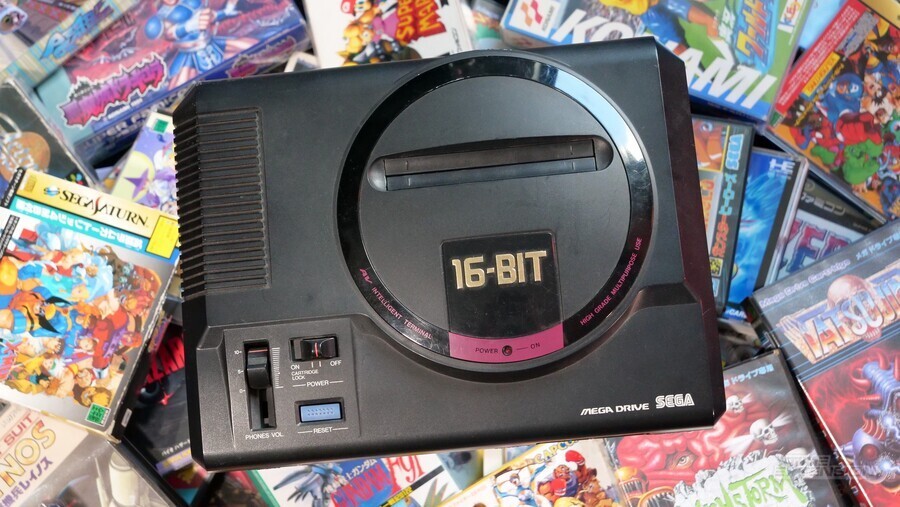
Small retailers also capitalised on the fact that some of the leading high street stores didn't think console gaming could recover from the crash of the early '80s. "European and US high street retailers did not think that the console craze would catch on," Carter recalls. "Import gaming was, therefore, an even bigger doubt; they said that the kids would not buy the consoles due to the games being in Japanese. However, the consoles sold like hot cakes as the kids figured out all the controls and moves. We set up a mail-order business advertising in the computer mags, and business again rocketed. We were selling all over Europe, as well as the UK."
With no official distribution channels, retailers like Carter had to rely on Far-Eastern connections; in Carter's case, this was a contact in Hong Kong. "He would send us the latest game releases by fax and then we would place orders based on estimated quantities of games that we could sell together with popularity. Sometimes we had pre-release reviews of new games from CVG, Mean Machines and the like, but sometimes we had to guess. Logistics was never a problem, as I had been sending and receiving goods to and from Hong Kong for many years. Hong Kong was seven hours ahead of the UK, so if we ordered the games at 9 A.M. UK time, we would receive them the next day via Fed Ex. Our business was very successful mainly due to the speed at which we could deliver the latest games to the users. The high street retailers were not selling the same games or consoles until much later. When we built up the market and they realised that video games were becoming popular, they were only dealing with the English games that were released and not the huge quantity of Japanese games available."
Hong Kong was seven hours ahead of the UK, so if we ordered the games at 9 A.M. UK time, we would receive them the next day via Fed Ex
Stores like KC's became havens for import enthusiasts, but prior to the advent of at-home internet, there was also a healthy demand for mail-order shopping, too, as veteran games journalist and former CVG editor Paul Davies recalls. "My mate at the time was pretty clued-up on AV stuff because his older brother was a TV repair guy, and had these AV trade newspapers and 'Computer Weeklies' or whatever they were. So, in there they were advertising import Mega Drives and PC Engines. I opted for the former. I had a job, was living at home, so could save the few hundred quid to send a Postal Order to this place that I can’t remember the name of, and ‘Allow 28 Days for Delivery’, which is exactly how long it took, which made me extremely anxious. But then, part of the thrill of buying stuff ‘on import’ was sending off a cheque and trusting whoever it was to send you whatever it was you’d read about in Mean Machines or CVG. When the games arrived, this would be the first time you’d seen or heard them in action, the first time you’d seen the box, read the instruction manual, admired all the artwork, and the smell. It was kind of a physical, tactile thing."
Then there was the small matter of getting hardware to work outside of Japan. In the UK, for example, most gaming systems at the time would connect to a TV via RF, and, because of the voltage difference between Japan and the UK, would require a special 'step-down transformer' to ensure that the console was receiving the correct voltage. This particular point caused Rignall quite a few sleepless nights. "These import systems needed an enormous step-down transformer to convert the British 240-volt supply to match the 120-volt Japanese standard. We'd plug the PC Engine's power supply into that and then connect that to the system to make it work. However, on several occasions, someone who wasn't paying attention connected a 240-volt power supply from another system directly into the PC Engine. I don't know exactly what it did, but there'd be a pop sound and an acrid smell. The end result was a dead PC Engine and me being very annoyed."
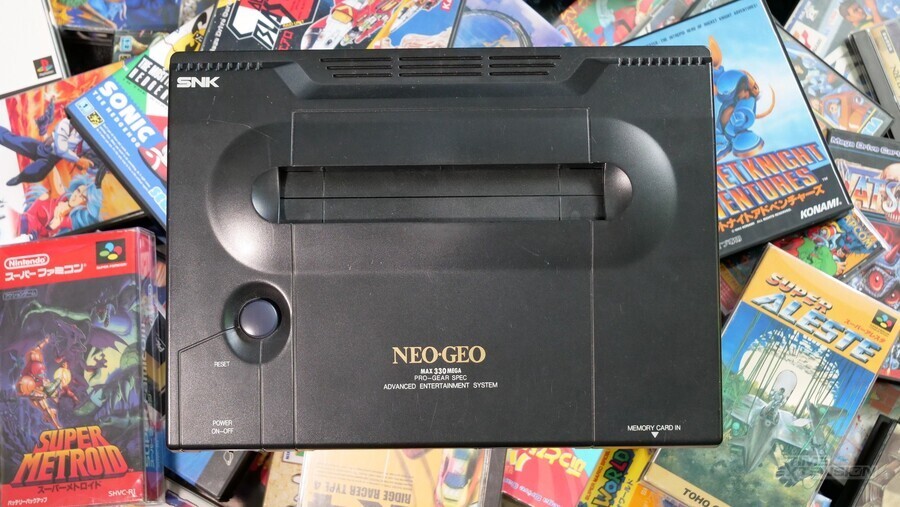
Many small-scale importers offered modifications that would allow the consoles to work on British TV sets – something that North American importers didn't need to worry about. "The importers brought in the Japanese consoles, which were NTSC, and had to be used via a TV with a SCART connecting cable," explains Carter. TVs with SCART were still quite expensive at the time, so importers had to get creative. "What we did was to convert the consoles to UK PAL-B by installing a UHF module," Carter adds. For those lucky enough to own a fancy new TV, the fact that Japanese machines natively ran at 60Hz compared to the slower 50Hz PAL consoles gave import gaming even more allure. Factor in the fact that NTSC games ran 'full screen' (because PAL uses an additional 100 lines compared to NTSC, many unoptimised titles were letterboxed on European televisions because those extra lines were unused) and the fact that you chose import over domestic product became a point of pride for dedicated players.
In the early '90s, I could – and regularly did – drive into Los Angeles and visit five different stores that sold nothing but new and used import games; some of them larger than most GameStop stores are today
Interestingly, over in the US, the grey import scene took a lot longer to become established – something that perhaps had a lot to do with the fact that the NES was so much more successful in that part of the world. "As far as I'm aware, the US import game scene only sprung up in the 16-bit generation, as the Genesis and Super NES were the first consoles that could be easily modified to play import games," says Casey Loe, who worked on the popular Diehard GameFan magazine, which prided itself on its coverage of Japanese games. Once the bug hit in the US, however, the scene exploded. "In the early '90s, I could – and regularly did – drive into Los Angeles and visit five different stores that sold nothing but new and used import games; some of them larger than most GameStop stores are today. There were vibrant import scenes in cities with large Asian populations; Los Angeles, San Francisco, New York, and maybe a few in Seattle. For everyone else, mail-order import game stores were major sponsors in all of the early video game magazines, tantalizing the masses with screenshots of unreleased shooters and action games that required no Japanese language skills to play."
Indeed, GameFan itself began as a retailer, not a traditional magazine. "It originally evolved from a catalogue published by a mail-order only video game import store, so its early issues existed primarily to push import games," Loe continues. "Even after that tie was severed, we saw giving equal coverage to import games as a way to distinguish ourselves from the other magazines who would only give import titles brief 'round-up'-style coverage."
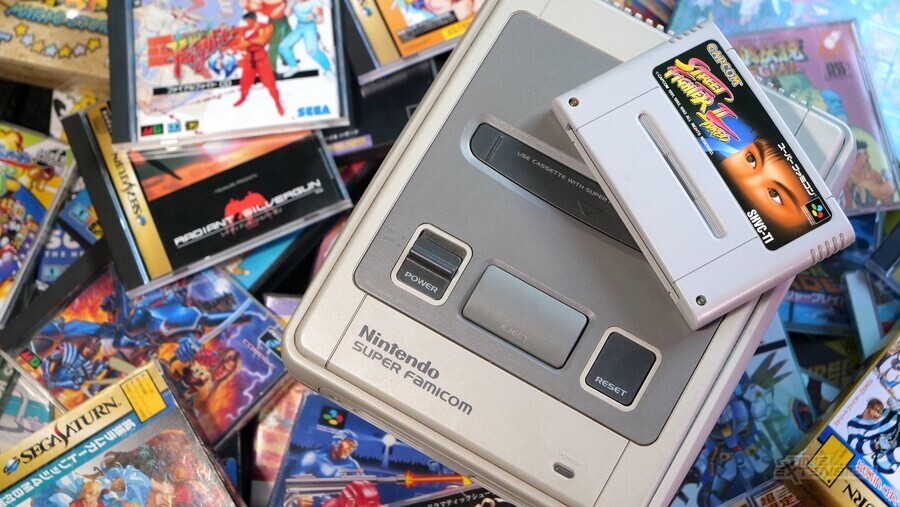
Fast forward to today, a time when magazine publishing is more and more reliant on packing in as many adverts as possible to make up for waning readership, and it's amazing to think that magazines like CVG and its console-centric spin-off Mean Machines – a fully-fledged publication that was just as successful as the magazine that sired it – devoted so much space to games which would never be supported by advertising spend from the companies which created them. It's also interesting to note that, in the early days at least, the UK distributors for many of the games CVG featured months ahead of their western release weren't too bent out of shape about the coverage.
They'd complain when we reviewed import software because it would generate a lot of phone calls to the company from people asking when these games were going to be officially released
"We didn't get too much push-back in the early days, probably because most Japanese software publishers simply weren't aware of what we were doing – they didn't have official European presences during this period," Rignall says. "Indeed, Sega even said at the time that they appreciated our coverage of the Mega Drive because it helped raise their image and generate excitement for the upcoming launch of the machine." This didn't last forever, of course. "As time went on and we began to work more closely with Nintendo, we did get some grief from them," Rignalls adds. "They'd complain when we reviewed import software because it would generate a lot of phone calls to the company from people asking when these games were going to be officially released. They also didn't like us reviewing Super Famicom software because they were worried that it might put people off the old 8-bit stuff they were peddling at the time in favour of waiting for the new 16-bit games to come out. Utter nonsense of course. But that is typical Nintendo behaviour."
Speaking of Nintendo, it would be remiss of us to cover this period in gaming history and not mention the UK magazine Super Play, which – with its anime-style covers by Wil Overton and its focus on Japanese culture – often used imports to pad out what was quite a light domestic release schedule. "There were only going to be six or so officially released games for us to review each issue – as opposed to a dozen or so coming into the country as grey import – and we quickly decided we might as well play to our strengths," says launch editor Matt Bielby. "The big issue was to fill the magazine, and if there were only ten games out one month, then nobody was going to moan at a one-page review of anything, even if it was some utterly baffling strategy game from Sunsoft or Enix, heaving with near-untranslatable Japanese text. It was all part of the magazine's mad mix, part of what made us different – and part of the appeal of the SNES too. Even if the average Super Play reader was never going to buy Super Wagan Island or Zan II, the fact that it existed and we could tell people about it added to the unique feel of the magazine." Staff writer Jonathan Davies explains that the gulf between a game's Japanese launch and its eventual western localisation also played a part in the magazine's stance. "These were the days when it could take months, or even years, for a game to make it over from Japan to Europe via official channels – if it ever made it at all – and the slow-motion, 50Hz PAL conversion tended to be a pale shadow of the NTSC original. So a true SNES fan sought solace in playing imported games on an imported console — or via a UK console and one of those wobbly adapters."
Rignall eventually left EMAP – and the UK – to work for Virgin Games, but his legacy would continue via the staff he hired. Davies, for example, would eventually take on the editor's role on CVG in the mid-'90s, a period where the games industry saw great upheaval as the 16-bit consoles were supplanted by 32 and 64-bit behemoths. This era also saw the gradual emergence of the internet, but, as Davies explains, the process of covering imports remained largely the same – even as the market began to mature and publishers got a little savvier to the notion of supplying publications with pre-release code.
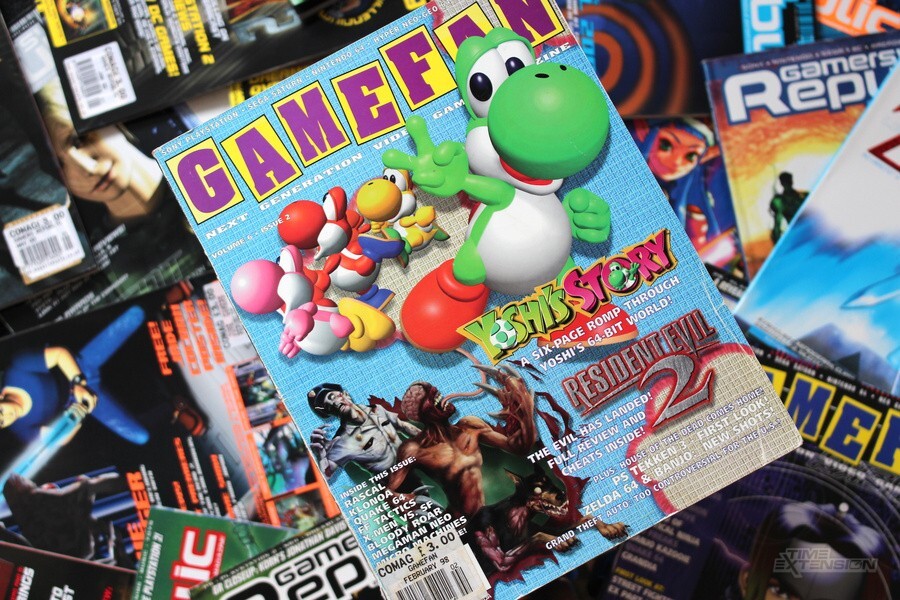
"Importing from Japan and sometimes the US was a way of keeping everything under our control, about as close as a games magazine could get to landing exclusive interviews with the stars by knowing where they went to drink," Davies says. "Few Japanese publishers had UK offices. Even fewer were willing or had the capability to provide code direct. Hudson, Namco, Konami and Sega were among the most cooperative; we’d get Bomberman on ROMs in the early '90s from Hudson, and see Ridge Racer for PlayStation on an early CD burn with marker pen on it. However, imports were still the lifeblood of the EMAP mags back then – everything else was business."
We had a couple of run-ins with Capcom's European publisher Virgin, especially with Resident Evil, which was massive for them... We didn’t just have the game, we had all the artwork for the cover and 8-page mega-feature inside the mag
As the '90s progressed and the success of the PlayStation pushed video games into a whole new level of commercial awareness, journalists like Davies found it harder and harder to accommodate import coverage into their publications, largely because publishers were now spending millions on regional promotion and import coverage often interfered with their plans. "We had a couple of run-ins with Capcom's European publisher Virgin, especially with Resident Evil, which was massive for them," he explains. "We didn’t just have the game, we had all the artwork for the cover and 8-page mega-feature inside the mag. It was similar with Sony for a while. There was a period of 2-3 years where it was obvious that the local policing of territories was not making sense to anyone, but professionally the contacts at global publishers had to follow procedure. We all calmed down and found ways around it because rules are rules. Sometimes there were benefits to hanging on a bit longer to receive full support, which meant richer all-round coverage for the audience. This might mean we’d go later than ideal with all the details, but the payoff was better for everyone. I suppose you could say that imports gave us a bargaining chip in some cases: we already have the game, give us a good reason not to run with it. Konami was superb with Metal Gear Solid on PlayStation, which the UK office knew needed to launch as close to simultaneous as possible – and for the PAL version to be good. This bargaining thing also needed communicating to the ads team, because we had to weigh up all the pros and cons and be uncharacteristically mature about it, especially when we moved from 'Sega versus Nintendo' to 'Sony versus Microsoft'."
It was the gaming market's incredible growth throughout the '90s that ultimately spelt the end for the grey import market that had established itself during the 16 and 32-bit eras. In the UK, the rot began when dedicated high street video game stores appeared (GAME, Future Zone and Electronics Boutique) while other established retailers (Dixons, Currys and Toys "R" Us) woke up to the incredible commercial potential of video games, devoting a sizeable amount of shelf space to console software and hardware – albeit of an official, rather than imported, variety.
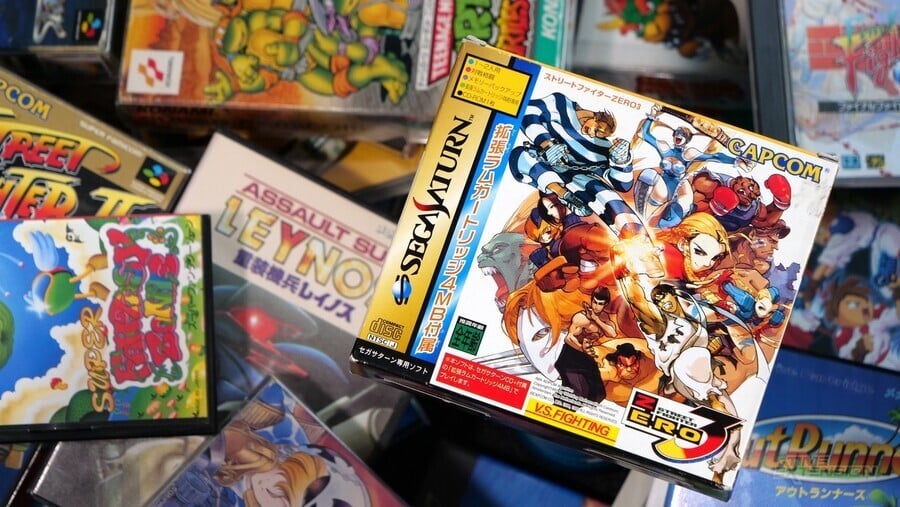
While these stores weren't dealing in Japanese software, they had an unfair advantage when it came to official games, which were still an important part of the business, even for the grey importing indies. "The importers who built the market were put out of business when the big retailers made direct deals with the console game manufactures to get the first release of every game one week ahead of the other sellers," explains Carter. "This destroyed the market for us indies, as the players want the game on the first day of release." The gap between Japanese and western releases would eventually contract – Sonic 2 was famously released on the same day all over the world, for example – while the headaches caused by different regional TV standards would evaporate with the arrival of HDMI. With the adoption of the internet, the need for middlemen also vanished, and anyone who wanted to order import software could do so via their computer.
I know it's elitist, but I really miss living in a whole parallel dimension of JRPGs, quirky action games and anime-licensed fighting games that most of the gaming world didn't even know about
It's somewhat ironic that today – when import gaming is easier than ever thanks to the internet, a globally-recognised TV standard in HDMI and a general lack of regional lock-out measures – it's perhaps less relevant than it has ever been. Is the market missing something by turning its back on modern-day imports? "Not at all," says Rignall. "I think it's great that most games have a simultaneous or near-simultaneous worldwide release these days. Gamers around the world can all enjoy the same experience at the same time and not feel excluded. I think it's also a blessing not having to mess around with dodgy transformers, incompatible power supplies, and weird display technologies. It just makes it easier for everyone to play, and they don't have to worry about missing out."
Loe agrees, to a certain extent, at least. "Not only is 'importing' – which is really just downloading a game to your region-free console – trivially easy now, there's nothing even to import; the video game industry balance has shifted so far to the west that any game with a budget would only be produced with a western release in mind, and simultaneous global releases are fast becoming the norm. As these are all changes I've spent my career advocating for, It would be hard to argue that that's a bad thing. But on a personal level, I miss it terribly. I have so many happy memories of discovering amazing finds in those Los Angeles import shops, and when my family took a trip to London, I was far more excited about buying grey-market mags and scouring London for a Megadrive copy of New Zealand Story than in seeing any of the actual sights. When Phantasy Star IV came out in Japan with no western release planned, I was so desperate to keep up with my favourite series that I began studying Japanese just to play it, which ended up leading to my entire adult career as a games journalist and translator. So yeah, I know it's elitist, but I really miss living in a whole parallel dimension of JRPGs, quirky action games and anime-licensed fighting games that most of the gaming world didn't even know about."

Davies feels very much the same; there's a yearning for something lost, but ultimately the market today is in a better place. "It’s like anything before the advent of the internet, it used to be seeing something cool over there – Japan, America – and being the first in your street to know about it, then own it and show it off. Having something that is still nerdy and niche that you are intimately following before it’s discovered by the 'normies'. We’re missing a conversation that belonged to a smaller, more dedicated group of people, and finding that connection to like-minded people from other parts of the world. I do like, however, that games are a global thing now. Or, the ones purposefully designed to achieve that aim, like Animal Crossing. Experiences like this shouldn’t be held back like they used to be. It proves that you don’t need to be Japanese to enjoy JRPG-style adventures or be Western to be hardcore into Halo or Gears of War."
Being mid-forties, I'm afraid the hipster 'retro chic', coffee table approach to collecting is novel to me – the consoles were just what we used, rather than a curio antique, although I can obviously appreciate the appeal
While grey importing isn't as big a part of the retail landscape today, it's interesting to note that there's a healthy market for 'retro' import gaming, with those who grew up during the '90s using their disposable income to snap up the titles they so badly wanted to play back in the day, but simply couldn't afford. Pete Koeppl runs Genki Video Games, a UK-based online retailer which specialises in sourcing Japanese titles from the past few decades of gaming history, and finds that there's still a considerable demand for retro imports. "Certain games on certain formats such as the Super Famicom and Mega Drive have undergone hyperinflation in recent years putting them only in the top bracket of collectors," Koeppl explains. "But there are still plenty of titles on all formats that remain within financial reach and in demand. Formats that can almost be 'completed' such as the Virtual Boy seem to be en vogue. And lockdown seems to have increased the need for the security blanket a collection provides of a safer, nostalgic place." He's also noticed a trend of younger players – who weren't around to experience the grey import boom first-hand – snapping up retro titles. "Being mid-forties, I'm afraid the hipster 'retro chic', coffee table approach to collecting is novel to me – the consoles were just what we used, rather than a curio antique, although I can obviously appreciate the appeal! Personally, I'm very grateful to the likes of Jaz Rignall and Wil Overton for introducing games and an intriguing culture I was otherwise unaware of, and I feel the box art added to the mystique. A physical collection can be a thing of great beauty."
Things might be very different today, but 30 years ago it was the case that for thousands of people, the first time they saw a new game or console in the pages of magazines like CVG or Mean Machines was the first time they'd seen it, ever. "It was one of the most exciting and fun times of my career," Rignall concludes. "Ultimately, I'm a hardcore gamer and being in a position where I was afforded the luxury of being able to not only play the very hottest new games, but write about how great they were was incredible. I just felt so lucky being in that position."
Davies is in agreement and feels that the need to 'share the love' for unknown or unobtainable games was a prime motivator. "On the magazines and websites I helped to run, this was our whole mission – our collective madness – which was, thankfully, appreciated by others like us that didn’t have such a lucky break in life. We all knew, or most of us did, that our positions were privileged and that we couldn’t and shouldn’t short-change our audience. So, being the first in the country to uncover an import gem was doing our basic job."






Comments 12
Those were the days! I remember ordering many Japanese Mega Drive games from random importers who advertised in Mean Machines. I never got scammed once sending over those postal orders amazingly! 😁
I remember saving up and getting a converter for my SNES (which I still have, the Universal Adapter ftw) and getting Spiderman/X-Men Arcade's Revenge 6 months before the PAL release. I never really got into the Japanese scene which is disappointing but I often got some real bargains from trade in shops for US versions of games at a time when I couldn't really afford many new titles.
Super Play - still the greatest video games magazine ever.
I used to get grey imports from a big shop in Bournemouth UK. I can’t remember the name. I used to go down there when a big release had come out stateside for the SNES but wasn’t in the UK yet. Super Star Wars. Starfox. The latter was over £100 in eighties money!
Shekhana! It truly was a magical time back then. I remember reading in the back of Mean Machines that Konami were rumoured to be maybe, possibly porting their TMNT arcade game to the NES.
I went down to Shekhana and they had the finished game already in stock! 😵 Of course the Famicom release didn’t work properly with my PAL NES, the backgrounds were all shifted halfway down the screen for some reason. So I then got my NES modded to run US games and bought the US version of the game which ran fine.
That experience triggered a lifelong fascination with how games can differ from region to region as there were lots of little changes between those two versions.
Awesome article. I got my Game Boy from Shekhana and SFC from just around the corner at ACE. It was a ridiculously expensive time, paying through the nose for games you might not even be able to play properly but also extremely exciting.
An awesome read, thank you! I’m looking forward to more articles from this new site.
Great to hear from Pete from Genki Video Games in this article. I’ve ordered numerous Japanese games and hardware from him over the years. I recall putting an order in for Bomberman 64 (the Japanese exclusive one) with him and having to wait for the palett to arrive from Japan. It took a while and it felt a bit like the whole grey import scene from the 90s again…. Except I didn’t have to pay until it arrived and didn’t have to send a Postal Order 😀 I highly recommend his site for anyone interested in Japanese games.
I also blew a US SNES power brick when I plugged it straight into a UK socket with a shaver adapter (so no step down!). I remember the pop and acrid smell all too well. It was the first ever foreign console I’d imported, but thankfully it just blew the power brick and not the console itself.
Sound's pretty neat & cool, just unfortunately I was a bit to young for the old gray import scene & I'm still not sure what gray importing was like here in Australia.
So I mostly missed out.
I said mostly as my local Gametraders did stock the odd gray import with mostly with GBA & DS games.
So I did get get Final Fantasy V & VI's GBA releases that were never officially released here.
So I did at least experience something.
A great article, one that fills me with so much nostalgia as I began my own import journey with the SNES. Nice to read about familiar names and be taken back to what was a special time. Gaming may be 'better than ever' today, but it was more magical then.
In Amsterdam, there was one shop specialised in importing jap games, Musitapes.. remember getting Japanese gameboy games from them, that felt so special..
What an amazing article, amazing exciting times that will never be experienced again. I feel sorry for those who think digital downloads are the future. Basically if you were there you'll know if you weren't pay attention. The PC Engine was the whole start of what was to come. Then the Megadrive, Snes, Neo. Will never forget how exciting it was to receive my Japanese import systems and games for the first time, magical days, gaming from this era will never be replicated.
I knew a guy who own a Sega Saturn back then who was very pissed that the Sega Saturn version of Street Fighter Alpha 3 never got released in NA. He was planning to go on a trip to Japan to find a copy in 2002 but eventually saw an import copy of Street Fighter Zero 3 for Saturn at a local game store near the mall going for around $90. He then took his PlayStation and Dreamcast copy of Street Fighter Alpha 3 and trade those in so he could get the Saturn copy for $25. He was that serious about the game and the Sega Saturn that much.
Great article. Brings back memories of me importing games for the Saturn and PS1 in the 90s. I'm in America so I used a company called NCS initially. I'd call up to make the preorder and it was always the same woman who took my order for years! Even had my Saturn modified so I could import KoF 95 with the cartridge.
Die Hard Game Fan was the first company I used though. I called all their stores until I found one with a copy of Scrambled Valkyrie for the SFC. I sent them a Western Union payment and had them overnight ship it to my house. It was great times! I miss it but at the same time appreciate the convenience of today. Similar to easy it is to get anime now compared to how it was to get fansubs back then.
Show Comments
Leave A Comment
Hold on there, you need to login to post a comment...